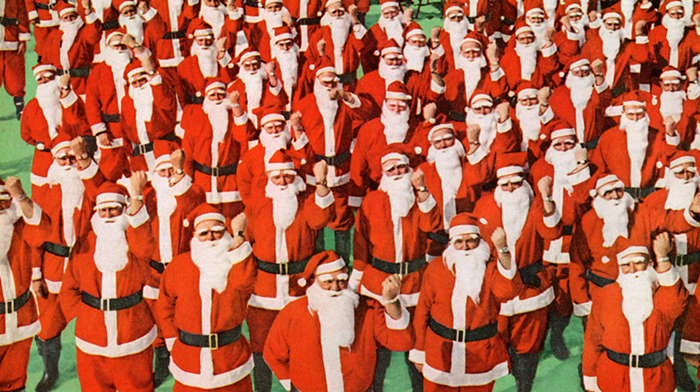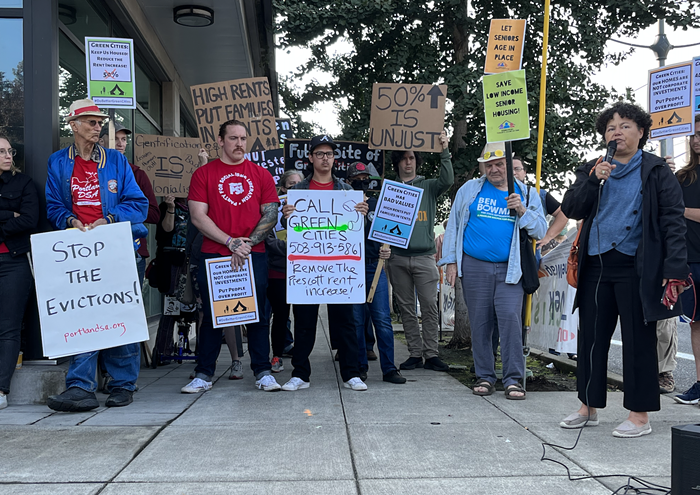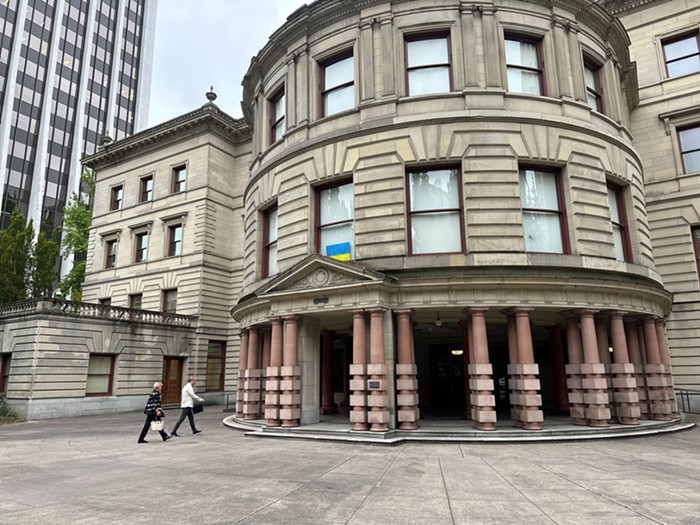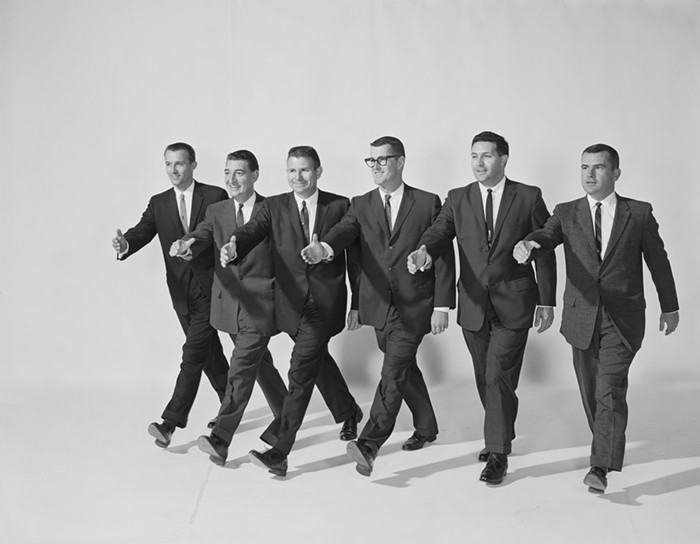
- Brian Echon
- Claudia Meza
Friday afternoon I stopped by the White Box (21 NW 1st Ave) for Claudia Meza's TBA:12 End Things installation, “Water”— a sound piece composed of field recordings of the titular liquid.
In a semicircle around the gallery, roughly 30 Califone tape recorders hang from the ceiling like a giant, abstract chandelier. The tape recorders are arranged in three rows, those dedicated to low, mid, and high frequency ranges. Visitors are invited to start and stop individual recordings to generate new soundscapes, and the Califone's tone and volume wheels open the piece up to deeper experimentation.
Arriving in the space with a musician friend, I observed dozens of little Christmases light up in his eyes when Meza's “Water” came into view. A gallery attendant explained the rules— green-lighting the go ahead and mess around— and we went to work pressing buttons and standing in different places to test out the dynamics of the piece.
The calming qualities of the splashing, humming, and pouring led me to sit on the floor and listen as other people played around with the sounds. After some time listening, I was able to distance myself from the individual devices and slide into the deeper invisible environments created by “Water.”
Closing my eyes, a still lake took shape, and to my left, someone waded through it, their footsteps suddenly transferring to my right, suggesting some glitch in space-time. Simultaneously, a river came into view— its water somehow flowing below the lake, pushing up the still surface to float in the air. Images continued: water filling an unknown shape, burbling between stones, dripping from a stalactite into a puddle.
The picture grew in my head, and as I wandered through it, Meza's field recordings solidified as signifiers of source environments, each individual sound suggesting the shapely world it was born in.
Opening my eyes, I thought about “Water” in relation to other sound installations that've employed similar modular construction techniques (Ethan Rose's TBA:09 piece, Movements, came to mind— an installation consisting of 125 music boxes, those detuned and placed in arrays around a classroom in Washington High School). While “Water” is constructed familiarly— with Cagean nods aplenty— the relationship between sound and environment (and sound and object) was compelling. I enjoyed the opportunity to connect sounds to their sources, and how the sonic experience became a window to an abstract, physical space.
I was so drawn in by this immersive listening exercise that I completely forgot about the show's video portions before leaving for the PICA offices to see Isabelle Cornaro's wall paintings and videos.
It's a happy accident, because it'll give me another reason to stop by “Water” before it closes on September 22.












